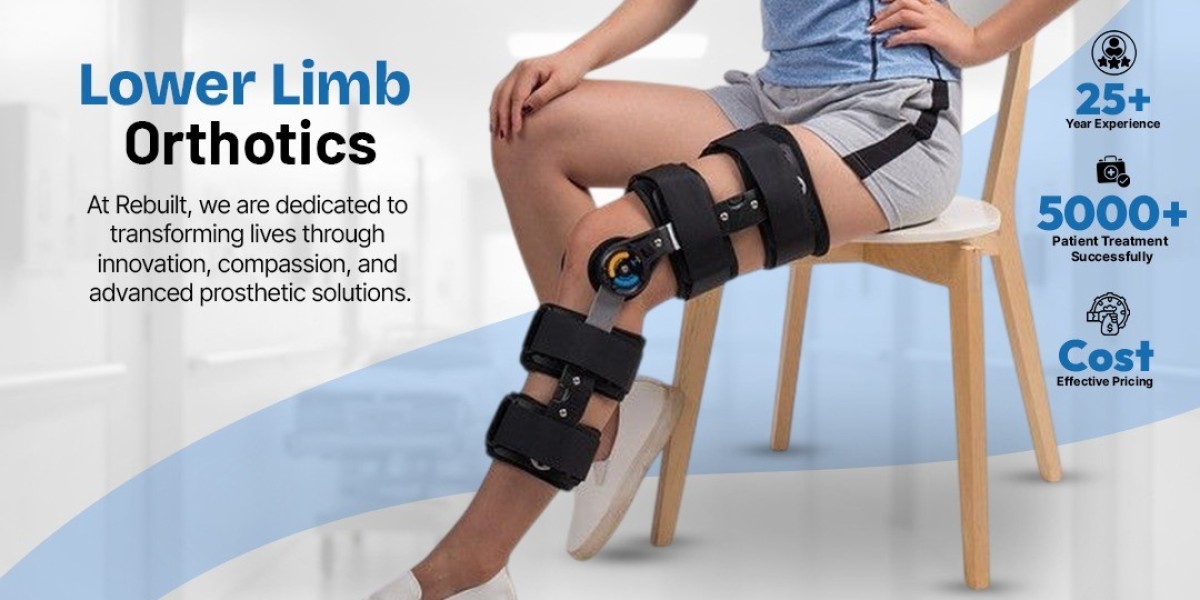Diabetes is a chronic condition that affects millions of people worldwide. Among its many complications, foot problems rank as one of the most serious. Nerve damage (neuropathy), poor circulation, and delayed wound healing make the feet particularly vulnerable to injuries, infections, and ulcers. That’s why foot care and protection are essential for diabetes patients, and orthotics play a crucial role in managing and preventing foot-related complications.
Understanding Diabetes and Foot Health
People with diabetes are at higher risk of foot problems due to two main factors:
Diabetic Neuropathy: High blood sugar levels can damage nerves, reducing the ability to feel pain, temperature, or injuries. Minor cuts or pressure points may go unnoticed, leading to serious infections.
Peripheral Artery Disease (PAD): Poor blood flow to the feet and legs slows healing and increases the risk of infections and ulcers.
Together, neuropathy and PAD make it critical for diabetes patients to monitor their feet regularly, maintain proper hygiene, and use protective footwear like orthotics.
What Are Orthotics?
Orthotics are specially designed devices that fit inside shoes to support, align, or improve the function of the foot. They can be custom-made or prefabricated depending on individual needs. Orthotics serve multiple purposes, including:
Correcting abnormal foot mechanics
Reducing pressure on high-risk areas
Providing cushioning and shock absorption
Preventing ulcers and deformities
For diabetes patients, orthotics are not just about comfort—they are a medical necessity that can prevent serious complications.
Types of Orthotics for Diabetes Patients
There are several types of orthotics suited for people with diabetes:
1. Custom-Made Orthotics
Custom orthotics are designed based on a detailed assessment of a patient’s foot structure, gait, and pressure points. Using molds or digital scans, specialists create devices that perfectly fit the foot. Benefits include:
Optimal pressure redistribution
Reduced risk of calluses and ulcers
Enhanced stability and balance
2. Prefabricated Orthotics
Prefabricated or over-the-counter orthotics are ready-made devices available in various sizes. While they are less personalized, they offer moderate support and cushioning for patients without severe foot complications. They are a cost-effective option for daily use and preventive care.
3. Diabetic Shoes
While not strictly orthotics, therapeutic diabetic shoes often come with built-in orthotic insoles. These shoes are specially designed to minimize pressure, accommodate swelling, and protect sensitive areas. Pairing diabetic shoes with custom orthotics can provide maximum protection.
4. Heel Cups and Cushions
For patients prone to heel ulcers or plantar fasciitis, soft heel cups or gel cushions can reduce pressure and absorb impact during walking. They are usually used alongside custom or prefabricated orthotics for additional support.
How Orthotics Protect the Feet of Diabetes Patients
Orthotics provide targeted protection in several ways:
Pressure Redistribution: People with diabetes often develop high-pressure areas, leading to ulcers. Orthotics help redistribute weight evenly across the foot, reducing stress on vulnerable spots.
Shock Absorption: Daily walking or standing can stress the feet. Cushioned orthotics absorb shock, protecting bones, joints, and soft tissue.
Alignment and Support: Poor foot alignment can lead to abnormal gait patterns, increasing the risk of injuries. Orthotics correct alignment, promote proper movement, and reduce strain on the feet.
Prevention of Skin Damage: By reducing friction and pressure, orthotics minimize the formation of calluses, blisters, and sores, which are common entry points for infections.
Choosing the Right Orthotics
Selecting the correct orthotic is critical for diabetes patients, as poorly fitting devices can worsen foot problems. Consider these steps:
Consult a Specialist: Podiatrists or orthotists can evaluate your feet, identify high-risk areas, and recommend suitable orthotics.
Foot Assessment: Measurements, digital scans, or molds help design orthotics tailored to your foot shape.
Material Selection: Soft, cushioned materials reduce friction and absorb impact. Rigid materials may be used for structural support if needed.
Trial and Adjustment: Orthotics should be tested and adjusted to ensure proper fit, comfort, and function.
Caring for Orthotics
Proper care ensures orthotics remain effective for years:
Regular Cleaning: Wash removable insoles with mild soap and water. Avoid soaking them.
Check for Wear: Inspect orthotics regularly for cracks, worn areas, or loss of cushioning.
Replace When Needed: Orthotics lose effectiveness over time. Replace them as recommended by your specialist.
Monitor Feet Daily: Always check your feet for redness, blisters, or cuts, especially in areas supported by orthotics.
Additional Tips for Diabetes Foot Care
Orthotics are just one part of a comprehensive diabetes foot care routine:
Daily Foot Inspection: Check for cuts, swelling, discoloration, or infection.
Maintain Hygiene: Wash feet daily and dry them thoroughly, especially between the toes.
Moisturize: Apply lotion to prevent dry, cracked skin, but avoid areas between toes.
Proper Footwear: Wear well-fitting shoes with adequate support. Avoid walking barefoot.
Regular Check-ups: Visit a podiatrist at least once a year, or more often if you have a history of foot problems.
Manage Blood Sugar Levels: Controlling blood glucose reduces the risk of neuropathy and poor circulation.
Benefits of Orthotics for Diabetes Patients
Investing in proper orthotics offers multiple benefits:
Ulcer Prevention: Reduces the likelihood of pressure sores and ulcers.
Pain Reduction: Provides relief from foot pain, plantar fasciitis, or joint strain.
Enhanced Mobility: Improves walking efficiency and balance, reducing the risk of falls.
Long-Term Foot Health: Protects bones, joints, and soft tissues, preventing deformities.
Peace of Mind: Offers confidence that feet are supported and protected daily.
When to Seek Immediate Medical Attention
Even with orthotics, certain signs indicate urgent care:
Persistent redness or swelling
Open wounds or ulcers that do not heal
Signs of infection (pus, warmth, foul odor)
Severe pain or numbness
Prompt treatment can prevent serious complications, including infections that could lead to amputation.
Conclusion
For diabetes patients, foot health is a top priority, and orthotics play a vital role in foot care and protection. By redistributing pressure, providing cushioning, and correcting alignment, orthotics can prevent ulcers, reduce pain, and enhance mobility. Combined with proper hygiene, regular check-ups, and blood sugar management, orthotics offer a comprehensive solution for long-term foot health.
Investing in high-quality, well-fitted orthotics is more than a comfort choice—it is a medical necessity that safeguards your mobility and quality of life. Consulting a podiatrist or orthotist is the first step toward healthier, protected feet.








